
Electron micrograph of mpox virus particles (yellow) cultivated and purified from cell culture.
Colorized scanning electron micrograph of mpox virus (orange) on the surface of infected VERO E6 cells (green).
Colorized high-resolution electron micrograph of mpox virus highlighting the large double-stranded circular DNA genome and viral membrane.
So here we go again.
Having once again convened and received guidance from his hand-selected advisory board to advise him on risks and to recommend a WHO response, on August 14, 2024, WHO Director-General Tedros Adhanom Ghebreyesus has declared a Mpox outbreak to be a “Public Health Emergency of International Concern (PHEIC)” for the second time in two years. This declaration follows the detection of an ongoing MPox Clade 1(b) outbreak in the Democratic Republic of Congo (DRC) - otherwise known as the Congo basin- that has spread to neighboring countries.
Please keep in mind that Tedros is not a physician or a virologist. He sort of just plays one on TV. He is most definitely a well-connected African political operator of the CCP/Marxist/Bill Gates crony caste. Tedros previously was a senior capo for the Tigray Peoples Liberation Front (TPLF) gangster mafia that ruled Ethiopia from 1991 to 2018.
It is unclear what is really driving this “new” outbreak. Do the new cases reflect viral evolution or increased sensitivity and specificity of testing and detection, having picked up previously undetected viral variants among those showing characteristic signs and symptoms of MPox infection? Or are there other possible explanations? No one can really say for sure. MPox Clade 1b is not a “new” virus, and it appears to have been circulating in the Congo basin for at least a few years now. What is new is the detection of cases outside of the Clade 1/1b historic geographical range. This may reflect changes in social dynamics, displacement of or changes in transportation patterns for mine workers or other human vectors for MPox spread, changes in the distribution of animal reservoirs, evolutionary changes in the virus, changes in risk factors such as acquired immunodeficiencies (vaccine or other iatrogenic caused, nutritionally or naturally acquired), or other unknown factors.
Many different possibilities and hypotheses.
The key observation here is that more cases of Clade 1/1b MPox are being reported over a somewhat wider geographic distribution than was the norm a few years ago. Note the nuance there- “being reported”. When there is more publicity about a disease or pathogen, this often results in a sampling artifact consequent to that publicity. Does this increased reporting incidence reflect a sustained increase in human-to-human transmission with this particular clade/subclade relative to recent history? Watchful waiting and the passage of time will reveal the answer. Until then, we just have speculation and propaganda.
There is no question that there has been a concerted campaign to raise awareness and promote fear of this virus. In other words, there is no question in my mind that there has been a promoted PR campaign around Clade 1b MPox. And this propaganda campaign has followed the classical psychological bioterrorism script described by former Soviet-Russian Foreign Intelligence Service (SVR) intelligence officer Dr. Alexander Kouzminov.
For example, see the work of Jon Cohen, who writes for the AAAS publication Science Magazine and never seems to miss an opportunity to promote various lucrative academic and industrial agendas—such as mRNA vaccines. After what we were all able to document during the COVID crisis, as far as I am concerned, “Science” magazine is best considered to be a propaganda outlet designed to support the academic/pharmaceutical industrial complex.
For example, this piece which breathlessly states the obvious and well-known -
Amid Congo’s deadliest mpox outbreak, a new worry: virus has become sexually transmissible
A related viral strain caused a global mpox outbreak in men who have sex with men
29 NOV 2023
Or this recent Fearporn classic, pushed out on the heels of the latest Tedros declaration-
Rattled by mpox surge in Africa, WHO declares a global health emergency—again
Two years after global outbreak, rapid spread of new variant on the African continent triggers fresh alarm
14 AUG 2024
Which was closely followed by this PsyWar bioterrorism propaganda gem-
The untold story of how Nigeria’s mpox outbreak sparked a worldwide epidemic
PULLING BACK THE CURTAIN
Mpox circulated in Nigeria for 8 years before it sparked a global outbreak. What happened? And could it have been stopped?
Having watched him for years and met with him personally in the past, I have reached the point where I wonder who Jon’s “Mockingbird” press handler is over at Langley, VA.
Given that there are many signs that MPox, like avian influenza, has been weaponized in a manner reminiscent of what progressive Journalist Naomi Klein calls “Disaster Capitalism” (which I call “Disaster Cronyism,” or “Psychological Bioterrorism”) and what Dr. Alexander Kouzminov calls “Information Bioterrorism”, the purpose of this essay is to sort out kernels of verifiable truth from the PsyWar chaff surrounding the latest corporate media PR/Fearporn push concerning this topic. So if you are sleepless in Seattle, you will know whether MPox truth or propaganda keeps you awake.
First off, Is there such a thing as Monkeypox virus?
Sorry to have to say this, but…. Just to be clear (for the trolls and the virus-denier community), MPox or Monkeypox is a virus. Viruses are actually a thing. They exist. And I am guilty of being a virologist. I have isolated, grown, and studied viruses that infect animals and bacteria. Monkeypox is a DNA virus. Monkeypox virus has been isolated, cultured, and imaged.
At the top of this essay, I have included electron micrograph images of MPox (or Monkeypox) viruses. If you pop open a monkeypox lesion from an infected person’s body and rub the fluid on your skin, you will get infected and develop monkeypox disease. If you insist on shouting at me that viruses don’t exist, I invite you to perform this experiment on yourself. And, being only human myself, the immortal words of Elon Musk come to my mind (GFY). Enough said.
For the rest of us- Let’s address the Gain of Function issue up front:
There is evidence suggesting that gain-of-function research has been conducted on the monkeypox virus involving the genetically engineered crossing of Clade I and Clade II genomes and that these studies were performed in the laboratory or under the supervision of Dr. Bernie Moss of NIH/NIAID (Fauci’s old division).
I am unaware of any evidence that the gain of function work in the lab of Dr. Moss has any causal or genetic relationship to the Clade 1b virus currently circulating in the DRC and surrounding regions.
However, in the interest of completeness-
Gain-of-function research on monkeypox virus has been planned or conducted, potentially involving the transfer of genes from the more lethal Congo Basin clade 1 virus into the less lethal West African clade 2 virus.
NIAID initially concealed the project’s existence and later denied plans to move forward with the research.
The ethics and risks of gain-of-function research on monkeypox virus are a subject of ongoing debate and concern.
Transfer of genes: A researcher (Bernie Moss) at the National Institute of Allergy and Infectious Diseases (NIAID) described plans to conduct a research project involving the transfer of genes from a lethal Congo Basin clade monkeypox virus (clade 1) into a West African clade monkeypox virus (clade 2), which is the version currently circulating in humans. This project aimed to create a lab-generated monkeypox virus that is 1,000 times more lethal in mice and transmits as efficiently as the circulating virus (what could possibly go wrong?).
NIAID’s response: When confronted by Congressional investigators about the project, NIAID initially stated that it had not been formally proposed and had no plans to move forward with the research. However, it’s unclear whether the project was ultimately conducted or not.
Fauci’s institute’s concealment: Congressional investigators revealed that Anthony Fauci’s institute, NIAID, concealed plans to engineer a pandemic-capable monkeypox virus with a case fatality rate of up to 15% from Congress and the media. This suggests that gain-of-function research on monkeypox may have been conducted without transparency or public disclosure.
Scientific articles and studies: Several scientific articles and studies discuss the potential risks and ethics of gain-of-function research on monkeypox virus, highlighting the need for careful consideration and oversight.
Key Basic MPox Takeaways
The term “MPox” reflects the recent politically correct rebranding of the prior descriptive name Monkeypox, which was commonly applied to this virus since the mid-20th century. “Monkeypox” is still commonly used to define this poxvirus in scientific and medical literature.
So, the medical community thought and language police can just back off from their virtue-signaling reprimands of those who use classical terminology. This type of behavior does not serve any productive purpose other than academic one-upmanship and mind games. Just grow up and act like professionals.
MPox is a zoonotic virus- it resides in many African animal reservoirs including various monkeys. Therefore it is unlikely that MPox can be eradicated even if quotas on African bush meat were lifted, metaphorically speaking. Humans can become infected by contacting infected animals, by closely contacting (typically skin to skin) other humans, or by otherwise becoming exposed to the fluid that accumulates in a “pox” vesicle. Absent such close contact exposure, your risk of contracting MPox is negligible.
Furthermore, infected persons lacking other significant comorbidity risk factors (such as an acquired or innate immunodeficiency) are very unlikely to die from MPox infection.
Please read and remember that last sentence. MPox is not a major existential threat to your survival. It will not be the end of civilization as we know it. MPox has been circulating at a low level in Africa for a very long time.
This is not a virus of major pandemic potential. Personally, I predict that calling this outbreak which may or may not be new a “Public Health Emergency of International Concern (PHEIC)” is just going to further degrade the legitimacy of the WHO in specific, as well a degrading public trust in the “public health community” that endorses this latest “Crier au loup”.
With that said:
MPox infections in the DRC have long been associated with an endemic strain, known as clade I, but a new variant, clade Ib, has been detected and appears to spread more easily through routine close contact, including sexual contact relative to clade I.
There are asymptomatic pox cases, but the percent of these cases relative to the total number of cases is unknown (asymptomatic seroconversion).
The spread of clade Ib across Africa has raised concerns about its potential for further spread within the continent and beyond in high-risk populations.
High-risk populations are primarily men who have sex with men, prostitutes, and family members or others in close contact with infected individuals.
Tedros calls for a coordinated international response to stop the outbreaks and save lives, stating, “It’s clear that a coordinated international response is essential to stop these outbreaks and save lives.” But this infection is generally not lethal. And there is no clarity about how a “coordinated international response” will do anything to “stop those outbreaks and save lives”. No specific plan, no data to support this statement. Therefore this statement meets my criteria of a “public health official” intentionally promoting the weaponization of existential fear of an infectious disease. In other words, psychological bioterrorism. Yes, I do think that WHO director Tedros repeatedly engages in psychological bioterrorism, and is a psychological bioterrorist.
The WHO has released $1.5 million in contingency funds and plans to release more in the coming days, with an initial response plan requiring $15 million. According to the WHO, the agency will appeal to donors for funding (which seems to be self-defining as an “agency” - of what government?) Just an observation - a $15M USD ask is a pittance for something that truly represents a “Public Health Emergency of International Concern (PHEIC).” Gently put, there is a lack of alignment between the message and the ask. How Tedros plans to stop endemic, zoonotic MPox in the Congo basin and surrounding regions with a $15M budget will be fascinating to discover. It would be one of modern history's biggest bangs for public health buck expenditures. In other words, this reeks of disingenuousness and coincides with a long history of public health corruption in this region.
Additional Context:
This is the second time the WHO has declared a PHEIC for Mpox, following an earlier declaration in 2022-2023 for a global outbreak primarily affecting men who have sex with men.
The current “outbreak” in Africa is associated with over 17,000 suspected cases and more than 500 deaths, mainly among children in the DRC. A large fraction of those deaths attributed to MPox have confounding co-morbidities such as acquired immunodeficiency. There is no information on how may of those children whose deaths were attributed to MPox were being trafficked or otherwise subjected to sexual abuse, but it is a reasonable assumption that this is a significant fraction. As we learned was the norm with COVID-19, we are once again left with squishy definitions and inadequate data to discriminate between death WITH MPox (as well as other confounding medical conditions) and death FROM Mpox.
In 2021, the Democratic Republic of the Congo experienced approximately 700,000 deaths. Therefore, we are talking about 0.07% of all deaths in the DRC. The total population of the DRC is about 11M humans. About 0.1% of the global population of humans. And for this, should Western nations spin up a multi-hundred-million-dollar vaccine campaign? I think that would be a gross, fiscally irresponsible misuse of public health funds. There must be thousands more effective ways to spend that money. But it would be great for Bavarian Nordic’s business! (BN makes a Smallpox vaccine that appears to have some efficacy in preventing Clade II MPox infection. Efficacy against Clade Ib is unknown).
Behavior change (absolutely, as is always the case with STD) and maybe vaccines for the high-risk populations (this is debatable as what is available is a leaky vaccine, not designed for/mismatched for this viral clade) which may have helped to control the spread of Mpox during the previous global outbreak (two years ago), and similar measures are likely to be used in responding to this new outbreak.
Alternately, the coefficient of reproduction of MPox in that outbreak was always low, and just a small change in behavior among those at higher risk (ergo Men who have sex with Men) was enough to push the coefficient (Ro) below one, resulting in extinguishing the spread.
Looking beyond the psychological bioterrorism and propaganda coming from the academic/biopharmaceutical industry and WHO leadership that has a clear and repeated history of psychological bioterrorism, what do the boots on the ground, operational level WHO public health people who actually are trained in public health (in contrast to Tedros) have to say about MPox Clade 1b risk in the DRC and surrounding environs?
You don’t need to just listen to me. Let’s turn to WHO’s Dr Rosamund Lewis for answers to key questions:
What are the symptoms of monkeypox?
Who is at risk and how can we protect ourselves?
Why is WHO concerned about it?
Transcript below. You can find the video here. Note that even the WHO expert calls it monkeypox.
WHO Interviewer Vismita Gupta-Smith (VGS): We are talking about monkeypox today. Is this a new disease? What is the treatment? Does the vaccine work? Who is at risk and why is WHO concerned about it?
Hello and welcome to Science in 5. I'm Vismita Gupta-Smith. Our expert today is Dr Rosamund Lewis. Welcome, Rosamund. Let's start with explain monkeypox to us. What are the symptoms? Is this a new disease?
Dr Rosamund Lewis (RL): Monkeypox is not a new disease. It was first discovered in a monkey in 1958 and hence the name. However, the first infection in a human was discovered in 1970 in a small child in the Democratic Republic of the Congo. Since that time, increasing numbers of cases have been recognized. And in particular, over the last 5 to 10 years. What's different now is that we're seeing cases in other countries that normally don't have monkeypox. And this is very unusual. We've had the occasional outbreak or a single case detected in a traveler from West Africa. But in fact, we've never seen an outbreak like this before.
The most important thing about monkeypox is that it does cause a rash which can be uncomfortable, it can be itchy, and it can be painful.
<authors note- Itchy, painful rash, not death>
So the most important thing about caring for someone with this illness is basically taking care of the skin and taking care of any symptoms that someone might have, such as pain or itchiness. It's important to know that research over many years has also yielded some vaccines and treatments for monkeypox.
These are new products and not yet widely available. However, the vaccine is recommended for persons who have been in contact with someone who has monkeypox. When it comes to treatment, most people don't need the new products. Most people don't have a severe case of monkeypox and can be managed conservatively with regular care where it's necessary. It may be possible to access the new treatments for a very select few patients who may need them.
VGS Rosamund, explain to us how monkeypox spreads, who is at risk, and how can they protect themselves?
RL Sure. So monkeypox spreads through close face to face, skin to skin, direct contact. This is how it's always been described. There may be some new things happening in this outbreak now. We don't know everything. There's still a lot to learn.
So at the moment, the people who are most exposed appear to be men who have sex with men. So it's really important that all of us together make sure that the messages reach the people who need to have them right now. That is people who may be at risk right now. And right now, those people are men who have sex with men or other ones who may be in contact with them, including family members.
So because this virus does spread through close contact and person to person contact, it does mean that in the health care setting, a health worker who doesn't know what they're dealing with and may not have the right personal protective equipment may inadvertently be exposed. So we also want to be sure that health workers have the message that if they're seeing someone who may have a rash that is undiagnosed or has not previously been diagnosed, it's critically important to be aware that this virus is now newly spreading in different population groups and to ensure that all the basic precautions are taken to protect yourself with personal protective equipment.
Likewise, if there's someone who has monkeypox, lives in a family setting may also want to take care that other members of the family are not immediately at risk. So while we're talking about who is most at risk, of course it's really important not to generate stigma against population groups that are at risk. This includes men who have sex with men. It can also include people who are traveling from different countries who may be carrying the virus without knowing it. It's really critical that we avoid stigma. The reason is that if people feel stigmatized, they will not feel comfortable coming forward for diagnosis and care. And we really do want to reach the people who may be at risk.
VGS Rosamund, WHO has described the risk as moderate. Explain to us why WHO is concerned about this outbreak?
RL Most people who have monkeypox do not become very ill. However, WHO has described the risk as moderate because monkeypox is spreading in locations where it has never been reported before. So this new pattern of transmission is concerning and it's moving quite quickly.
So it's really important for WHO and all countries and all parties and all stakeholders at the community level to understand where the risk may be, <author- moderate risk> who may be at risk <author- men who have sex with men> so that people can protect themselves. This is the message that we would like to share is that people can protect themselves. If you know your own risk, you can lower your own risk.
Pasteur Institute MPox assessment
While the Pasteur has its own biases and affiliations with the academic/pharmaceutical industrial complex, it is often an excellent resource for current information concerning tropical diseases, and MPox is essentially a tropical disease.
Here is a link to the Pasteur Institute MPox resource page.
What does the Pasteur have to teach us about MPox in general, treatment options, and the current outbreak (updated in 2024)?
Overview
Mpox (also known as monkeypox) is a disease that was initially present in animals, especially rodents in Africa, and now circulates among humans – it is referred to as an emerging zoonotic disease. It presents as a mild form of smallpox, with less severe symptoms and a lower case-fatality rate (the number of deaths as a proportion of the number of people infected). Mpox is caused by the monkeypox virus (or MPXV).
Small localized outbreaks have occurred regularly in Central and West Africa in recent years and have been studied and monitored. A global monkeypox outbreak began in May 2022.
In the early 1980s, following the worldwide eradication of smallpox, vaccination against smallpox was discontinued. Individuals who received the smallpox vaccine are believed to have 80% protection against MPXV, since there is a degree of cross-protective immunity between the monkeypox and smallpox viruses.
In July 2022, the World Health Organization (WHO) declared the monkeypox outbreak to be a public health emergency of international concern, following its "extraordinary" spread through more than 75 non-endemic countries (regions where the disease does not usually circulate).
Causes
MPXV is a double-stranded DNA virus (around 200 kilobases) in the Poxviridae family, belonging to the Orthopoxvirus genus. It is related to the virus that causes smallpox, a disease eradicated by vaccination in 1977.
MPXV was first isolated in 1958 in a monkey colony in Copenhagen, Denmark, when the monkeys developed skin lesions that resembled those caused by smallpox. The disease was therefore given the name "monkeypox."
Although the name "monkeypox" continues to be frequently used, the disease is not transmitted to humans via monkeys but by rodents (see section "How does the disease spread" below). Since late 2022, WHO has recommended using the name "mpox" instead of monkeypox.
There are two main types of MPXV:
Clade I, found in the Congo Basin in Central Africa;
Clade II, found in West Africa.
The virus currently circulating in Europe is Clade II, which also recently caused an outbreak in Nigeria.
How does MPox spread?
Mpox is a zoonosis, in other words a disease transmitted from animals to humans.
It is transmitted to humans by rodents (e.g. rope squirrels or Gambian rats in Africa). But the animal reservoir has not yet been formally identified. According to a study published in 2021 by the Institut Pasteur about monkeypox in Central African Republic, the genomic history suggests multiple introductions from rainforest animal reservoirs.
Human-to-human transmission of MPXV occurs in one of the following ways:
by direct contact with infected animals,
by contact with skin lesions or bodily fluids,
indirectly via contaminated materials (like bedding or surfaces).
The disease may also be transmitted via the respiratory droplets of an infected individual.
From May 2022 onwards, thousands of cases of mpox were recorded in non-endemic countries (regions where the disease does not usually circulate). Studies are under way to help shed light on the epidemiology, sources of infection and modes of transmission of the disease. As of September 1, 2022, tens of thousands of cases had been diagnosed.
Rapid identification of new cases and ongoing surveillance are crucial in reducing the risk of human-to-human transmission.
What are the symptoms?
The clinical presentation of mpox is as a mild form of smallpox, an Orthopoxvirus infection that was declared to have been globally eradicated in 1980.
Mpox is less contagious than smallpox and causes milder symptoms.
In Africa, mpox has typically presented as follows:
an incubation period of around 12 days before the onset of the first symptoms;
generally a febrile prodrome (aches, headache, fatigue, etc.) for 1 to 4 days; the individual is contagious as soon as the first symptoms emerge;
then a skin eruption phase, lasting 2 to 4 weeks, with a rash in the form of small marks (a maculopapular rash developing into pustular lesions and then scabbing), which mainly affects the palms of the hands and the soles of the feet, and swollen lymph nodes.
The outbreak that has been ongoing since May 2022 in Europe – and has spread to the rest of the world – causes a more localized skin rash, often in the genital or perianal regions.
The symptoms last for 2 to 4 weeks and the illness generally goes away on its own. Complications may occur, such as secondary skin infections, septicemia, encephalitis or corneal ulceration. They can lead to severe forms of the disease. On its website, WHO reports a case-fatality rate of approximately 3 to 6% in 2022 for the outbreaks in Africa; the rate is higher with the Central African strain and in an endemic context. The case-fatality rate for the 2022 global outbreak is approximately 0.03%.
<authors note- that is a 100 to 200-fold difference between WHO hype and measured reality!>
Who is affected?
Mpox is an emerging infectious disease that was first identified in humans in 1970 in the Democratic Republic of the Congo (DRC). Most subsequent cases were reported in rural areas and tropical rainforest regions in Central and West Africa.
The frequency of outbreaks and the number of cases they cause in human populations have increased regularly in recent years. The geographical spread of mpox has extended beyond the forests of Central Africa to savanna regions and urban areas and even to other parts of the world, where cases have been imported.
This pattern of transmission can be partly explained by the global decline in immunity conferred by the smallpox vaccine following the discontinuation of the vaccination program in the 1980s (see the Institut Pasteur's retrospective analysis in July 2020).
But there are also other contributory factors which have shifted over the past 30 years, including major changes in land use, mass deforestation, growing urbanization, destruction of wildlife habitats and a loss of biodiversity. These ecosystem pressures caused by human activity are leading to an increase in human-wildlife interactions and are changing structures and dynamics among animal communities.
Socio-economic instability and civil war are also increasing human-wildlife interactions, aggravating the risk of the virus being transmitted from animals to humans.
Thousands of human cases of mpox are reported each year in several countries in West Africa (including Nigeria) and Central Africa. In the Congo Basin, two countries are particularly affected: the Democratic Republic of the Congo (DRC) and the Central African Republic (CAR); in these countries there has been an increase in the number of outbreaks over the past two decades.
Since 2018, human cases have been exported, mainly from Nigeria, to non-endemic countries – the United Kingdom, Israel, Singapore and the United States –, without giving rise to local clusters/outbreaks of human-to-human transmission.
A global outbreak began in May 2022, leading to the largest number of cases outside endemic countries and to the declaration of a "public health emergency of international concern" by WHO on July 23, 2022.
These cases are not the result of travel to endemic areas.
Since July 6, 2022, WHO has published a bi-weekly epidemiological situation report on the outbreak.
Between January 1, 2022 and June 19, 2023, 87,972 cases and 147 deaths were recorded worldwide.
<authors note- quite a difference between death count per the Pasteur and than being promoted by the WHO>
How is infection diagnosed?
Mpox is initially diagnosed clinically by specialist physicians (infectious disease specialists or dermatologists). Diagnosis is then confirmed by a laboratory-performed PCR test on an oropharyngeal swab and a swab of a skin lesion.
Differential diagnosis of mpox must consider other diseases that cause skin eruptions, especially chicken pox but also measles, bacterial skin infections, syphilis, herpes, etc.
What treatments are available?
An antiviral agent initially designed for treating smallpox has recently been approved for treating mpox. Treatment is only recommended for severe forms of the disease and must be administered orally, as early as possible, for 15 days.
On its website, the French National Authority for Health has published a series of answers to basic questions for healthcare professionals about MPXV infection and primary medical care.
How can mpox be prevented?
In endemic regions (in Africa), the main prevention strategy for mpox is to restrict human-wildlife interactions, which involves informing populations about the risk factors for zoonotic transmission (transmission by animals) so as to reduce the risk of transmission from animals to humans. It is also important to reduce other factors that contribute to the emergence of outbreaks, such as poverty – which leads to a dependency on bushmeat as a source of protein and to cramped and crowded living conditions – and military conflicts resulting in population movements.
More generally, the prevention strategy to limit human-to-human transmission involves awareness and information:
making populations aware of risk factors for transmission: avoiding skin contact with infected individuals or contaminated items (see above),
informing at-risk populations and health professionals.
The development of rapid diagnostic tests will help improve diagnosis and prevent human-to-human transmission.
The smallpox vaccines used in the smallpox eradication program in the 1970s offer some cross-protection against mpox. Other vaccines have also been developed more recently, including one that has been approved for mpox prevention.
Some countries offer vaccination for individuals who are likely to be at risk, such as laboratory staff, healthcare workers, etc. In France, the National Authority for Health issued an opinion on July 7, 2022 recommending that preventive vaccination should be offered to those who are most exposed to the virus: men who have sex with men, owners of sex venues, and sex professionals.
-End of Transcript-
Who stands to benefit from MPox Disaster Capitalism and Psychological Bioterrorism?
Moderna is currently in a phase II clinical trial using mRNA against Mpox.
Conclusion
As before with my many prior substack essays on the topic of Monkeypox, we are dealing with an irrational globalized action promoted by Tedros and the WHO, in response to a reported outbreak of a relatively rare African zoonotic infectious disease which is rarely lethal (especially when Western standard supportive medical care is available, and the patient does not have coexisting AIDS).
The spread of this disease is largely restricted to men who have sex with men.
There is no evidence of routine aerosol or fomite/hard surface (door knobs etc.) transmission of MPox.
This current situation does not merit designation as a “Public Health Emergency of International Concern (PHEIC)”. At most, it is a public health concern among a select and relatively rare population - men who have sex with men. There is no rational need to globally deploy public health fearporn, massive funding and a general vaccine campaign for a leaky and relatively unsafe product in response to a rare disease that is restricted to a minor subpopulation due to behavioral practices common in that subpopulation. Despite all of the conferred special privileges and social activism agendas surrounding that subpopulation.
As with many viral diseases, including Ebola, the time-tested and proven best measure to contain and mitigate the risk of this virus involves education and behavioral modification. NOT widespread deployment of a leaky “vaccine” with poor efficacy and significant side effects.
What is concerning is the repeated history of WHO Director-General Tedros Adhanom Ghebreyesus promoting Psychological Bioterrorism and Disaster Cronyism. This raises concerns about Tedros's biases, hidden agendas, and appearance of potential conflict of interest or corruption. This must be stopped, and he must be replaced as WHO Director-General.
You can pre-order your copy of PsyWar at a 10% discount here.
Editorial Reviews
“Psychological warfare methods were deployed to manage public responses to the assassinations of my uncle and father. In the modern digital world, PsyWar is becoming more and more sophisticated and successful in manipulating populations, groups, and individuals, and is now being widely deployed on Western nation citizens by their governments. This book is a manual on how to recognize and fight the effects of these methods and technologies that strive to control all information, thought, feelings and speech.”
—Robert F. Kennedy Jr.
“Very few people have learned more in the past five years than Robert and Jill Malone—or been braver in telling the rest of us about it. The result is this remarkable book.”
—Tucker Carlson
“Dr. Robert Malone’s contributions to the shift in America's consciousness during the COVID-19 pandemic, away from the scientific lies and obfuscation that beset us and back toward objective data and important scientific insights, may never be fully appreciated, but the world would look different today were it not for his efforts. PsyWar extends that legacy by serving as an incisive resource for anyone who wants to learn more about the underside of governmental and organizational workings that aim to control human thought, undermine human sovereignty, and rob us of our God-given power—power that is rooted in our connection with the universe and one another. These forces, persistent as they may be, will fail and will fall. Dr. Malone's book provides tools to help us fortify our minds against their assault. And those readers who also invest in ridding their bodies of the stress that contributes to our susceptibility to manipulation will find themselves forever free of their instruments of human enslavement.”
—Dr. Joseph Ladapo, author of Transcend Fear: A Blueprint for Mindful Leadership in Public Health; professor at University of Florida College of Medicine; and Surgeon General of Florida
“Every government in world history has used fear and misinformation to control the citizens. Malone’s book illuminates the evolving strategies so clearly that readers will intuitively sense the undeniable truth.”
—Gavin de Becker, bestselling author of The Gift of Fear
"During the COVID-19 debacle, it is a proven fact that Americans were lied to by a handful of dysfunctional senior federal health bureaucrats who ignored their oaths, silenced dissent, stifled freedom of speech, and dismissed early drug treatments in favor of a mass mRNA “pseudo-vaccine” program. While this never prevented viral infection or halted pandemic progression, it did garner billions of dollars for the participating drug companies.
Marching in lockstep, every American’s right to “Freedom of Speech,” so fundamentally engrained in our constitutional Bill of Rights, was made a mockery. For physicians, the Freedom of Speech to speak out against the dysfunctional COVID response was twisted into a recognized punishable offense in some states.
As a result, compassionate American medicine, accurate medical research, and the inviolate concept of patient informed consent was effectively destroyed in the United States. Many of our once esteemed national medical associations and colleges, have become nothing more than conduits of “misinformation” espoused by the federal health agencies who now are desperately trying to minimize the injuries and deaths caused by an ill-advised and ineffective mass mRNA vaccination campaign.
How did we arrive here and why has this gone unchallenged? The controversial new book PsyWar is a highly provocative deep dive, which takes the reader through a step-by-step account of how modern communications technology and social media has now been coupled to a biased corporate mass media monopoly. This has created a nightmare of propaganda and censorship that has suppressed the truth of the COVID-19 debacle.
The book outlines the current heroic David/Goliath fight still underway by true physicians, against a small but powerful group of unconstitutionally motivated federal bureaucrats. It is a continuing fight, largely hidden from the American public.
PsyWar is a carefully referenced book with numerous examples that support the authors’ contention that modern cognitive and psychological warfare tools have been employed by the US government as part of a mass formation psychological strategy to mold American opinion. It describes the various tactics used by global governments who now clearly define what is mis-, dis-, and mal-information in the world. It presents often shocking and still controversial histories starting with the 1964 Warren Report, to illustrate the origin of this information control and how modern social media serves as an advocacy conduit used to minimize any set of popular beliefs that the government finds inconvenient.
This book is thought-provoking reading for all Americans who believe that Freedom of Speech is vital for the continuance of our Republic."
—Dr. Steven Hatfill, pathologist and biological weapons expert; and author of Three Seconds Until Midnight




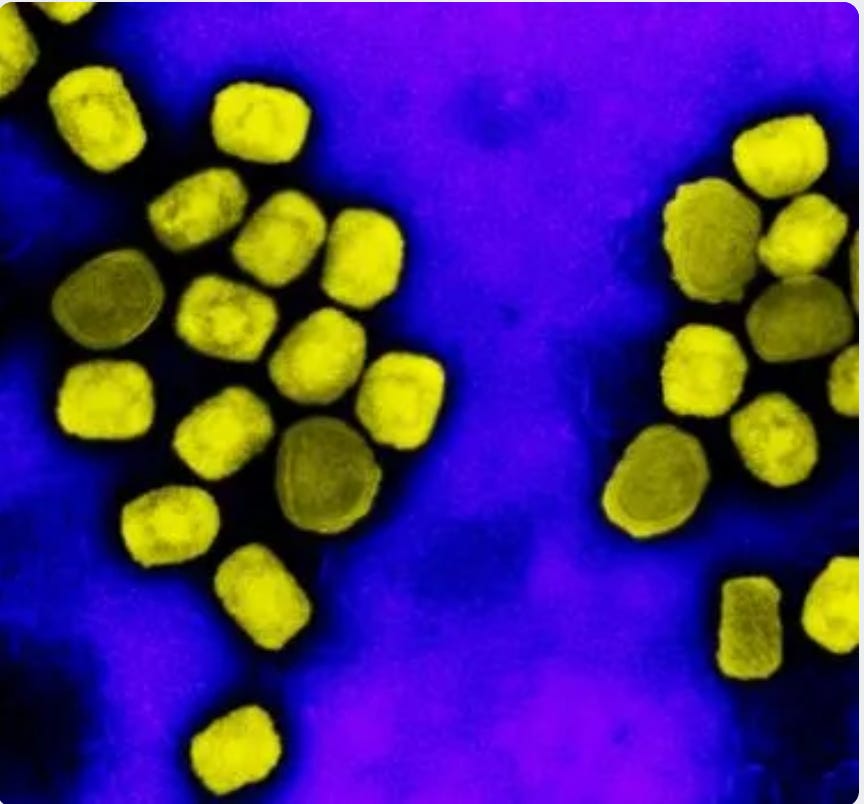
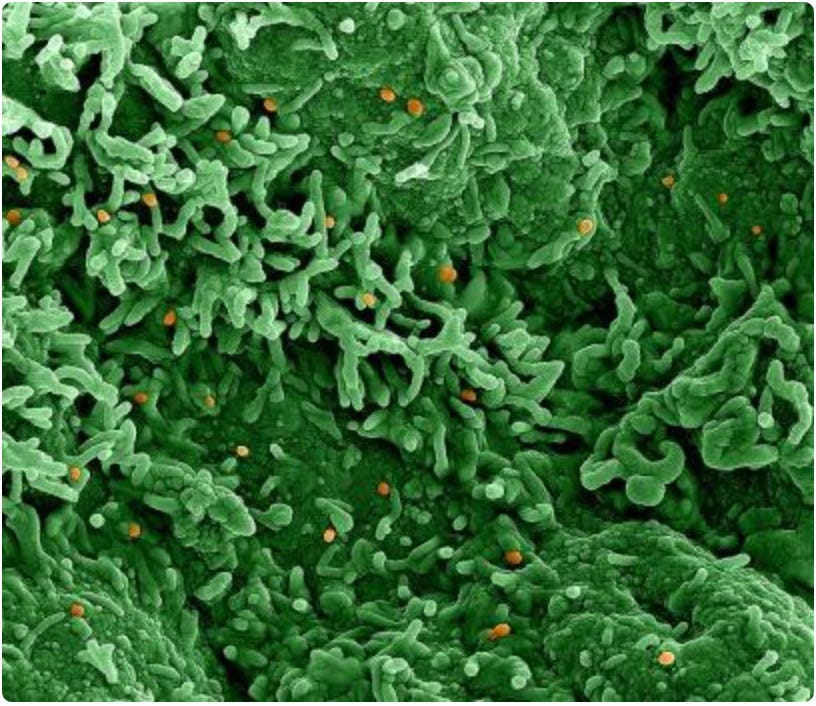
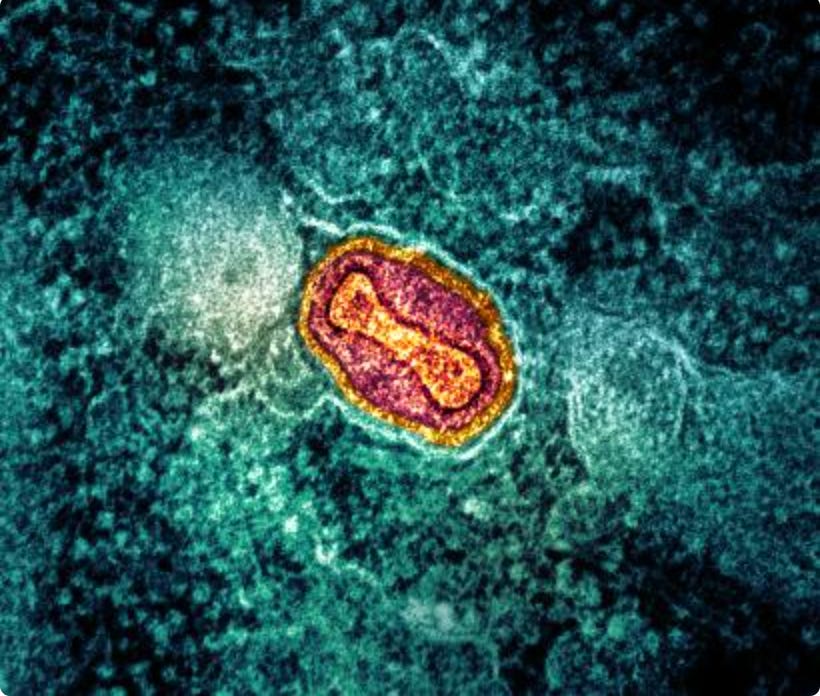

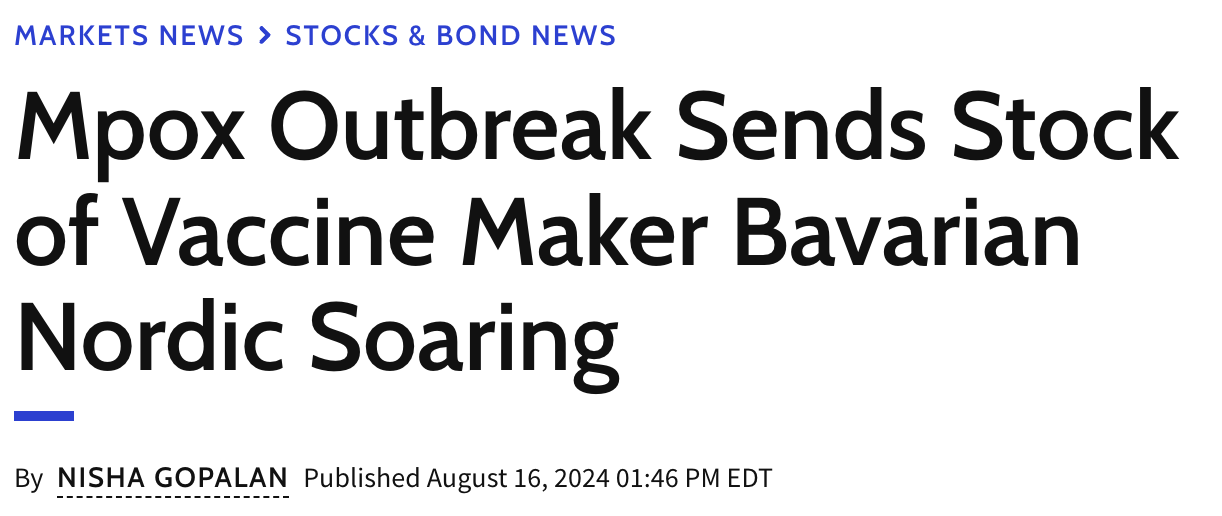


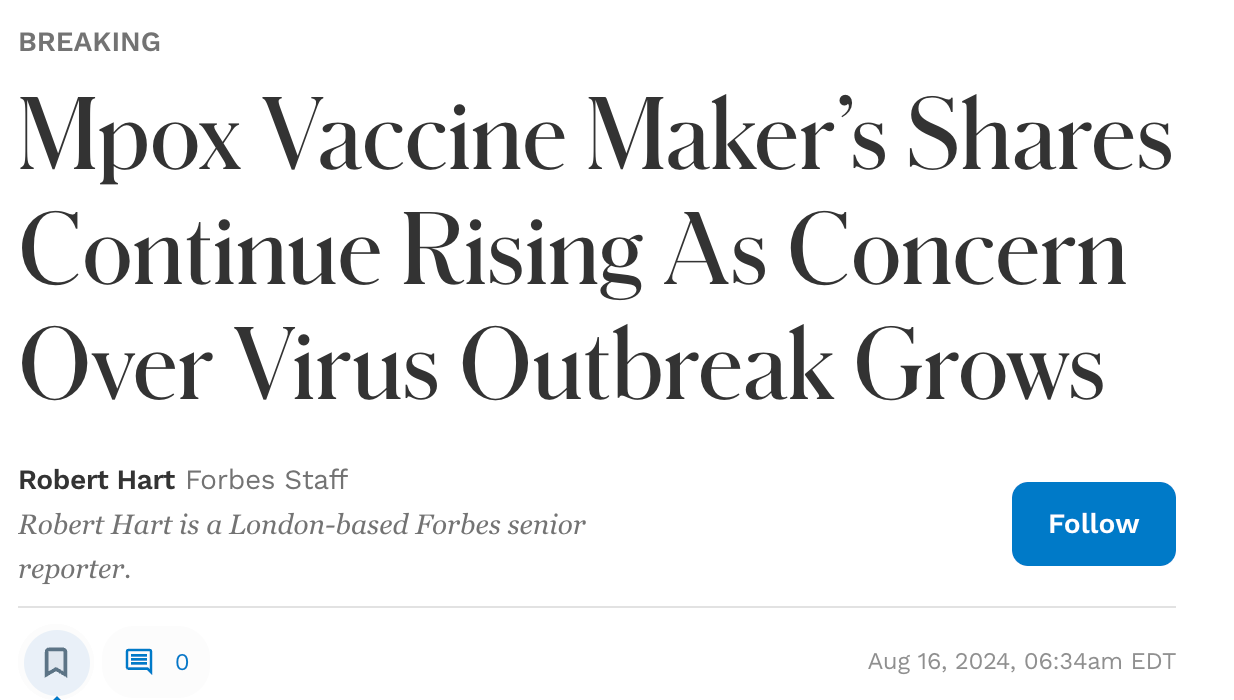


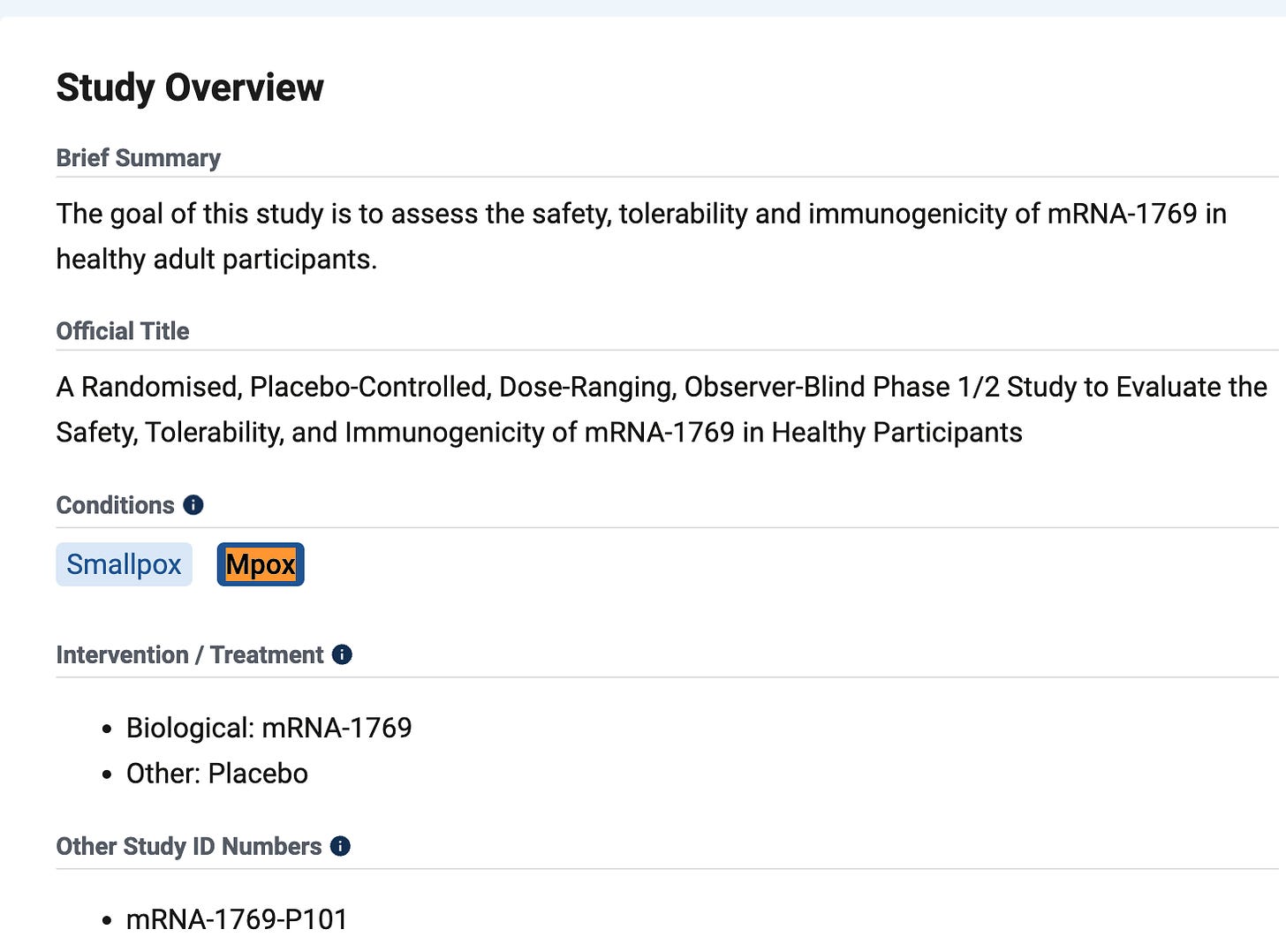














From the Congo to Boston Hospitals in a day. Last week my wife came home from work and the surgeons at her major Boston Hospital were spreading fear of masks anti virals and a potential round of new cutting edge vaccines. I tried to talk her down but they did their job of frightening the nurses, or I should say preparing them for what’s to come. On a similar subject there is another outbreak of Covid and useless masks are beginning to be mandatory again. It’s becoming a forever (psychological) war.
It's hard for me to think we could be heading toward anything but a show-down of some kind. The level of insanity in most governments of the world is OFF THE CHARTS.